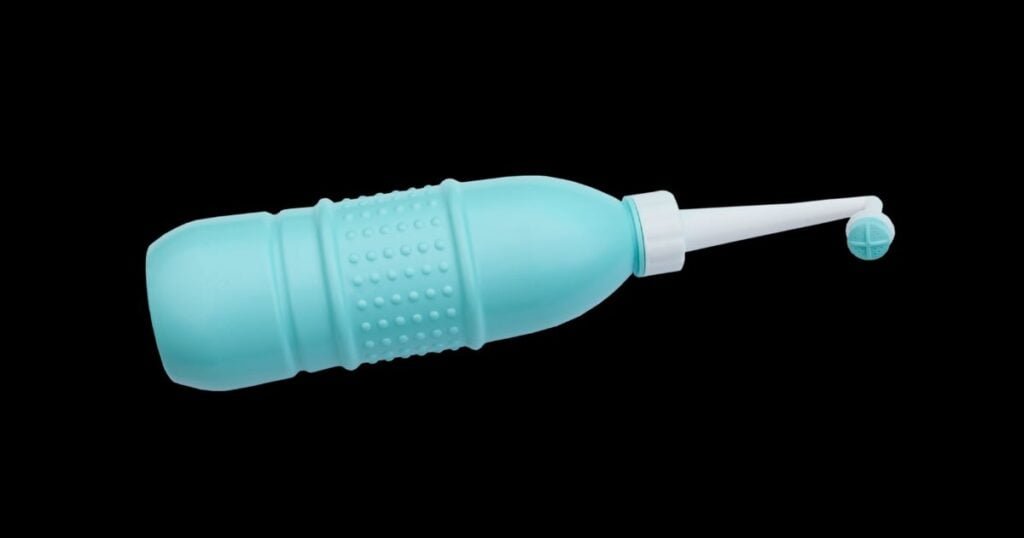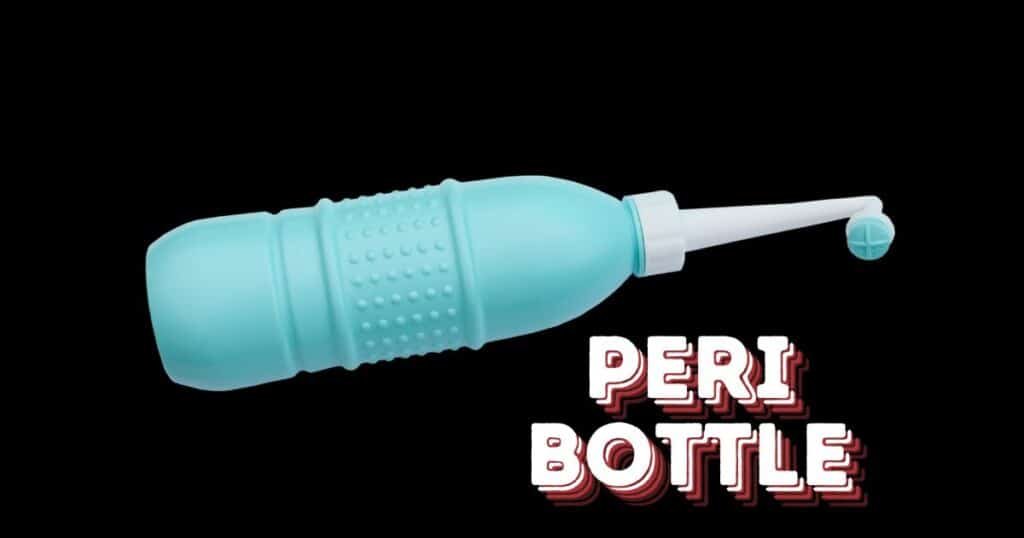Last Updated on 21 May 2024
Congratulations on your upcoming or recent childbirth! While this is an exciting time, it’s important to be prepared for the postpartum period and take care of yourself as you recover. A Peri bottle is one essential tool that can provide comfort and relief. This portable bidet is designed to help cleanse the perineal area and alleviate postpartum discomfort.
This ultimate guide will explore everything you need to know about using a Peri bottle and teach you how to use a Peri bottle. From understanding its uses and benefits, including the simple things that can make a big difference in postpartum recovery, to a step-by-step guide on how to use it. Whether you’ve had a vaginal birth or a c-section, a peri-bottle can be a valuable tool in your postpartum care routine. Let’s dive in and explore how to make the most of this simple and effective device.
Understanding the Peri Bottle and Its Uses
Before we delve into the details of using a peri bottle, let’s first understand what it is and how it can be beneficial. A peri bottle is essentially a portable bidet that helps cleanse the perineal area, which is the region between the vaginal opening and the anus. This area can become sore and swollen after a vaginal birth and even during the postpartum period. A peri bottle can provide relief and comfort by gently cleaning the area and reducing postpartum discomfort.
The Essential Role of a Peri Bottle in Postpartum Care
A Peri bottle is essential in postpartum care, particularly in providing perineal irrigation. After childbirth, the perineal area may be sore and swollen, and urination can be uncomfortable. By using a peri bottle, also known as a squirt bottle, you can easily clean the vagina and perineal area and alleviate the discomfort. This simple tool allows you to squirt warm water over the perineum, providing relief and promoting healing. The Peri bottle is recommended by postpartum nurses and healthcare professionals to soothe the sore perineum and ensure proper hygiene during the postpartum period.
Diverse Applications Beyond Postpartum Recovery
While a peri bottle is commonly associated with postpartum recovery, its uses extend beyond that. It can be beneficial for relieving other conditions, such as hemorrhoids and constipation. The gentle stream of water from the peri bottle can help soothe hemorrhoids and reduce discomfort. Additionally, it can help cleanse the perineal area, promoting hygiene and preventing infection. Whether experiencing postpartum discomfort or dealing with other issues in the perineal area, a peri-bottle can be a versatile tool with diverse applications.
How To Use a Peri Bottle
Using a Peri bottle is simple. This step-by-step guide will walk you through the process to ensure you use it effectively. From preparation and filling techniques to optimal positioning, we have all the details to make your experience comfortable and beneficial. Let’s get started!
Peri-Bottle Preparation and Filling Techniques
Before using a peri bottle, it’s essential to prepare it properly. Start by filling the peri bottle with warm water. The warm water helps soothe the perineal area and provides a comfortable experience. You can also add ingredients like witch hazel or essential oils for relief. However, it’s important to consult with your healthcare provider before using any additional ingredients. Once the peri bottle is filled, you can move on to the next step.
Optimal Positioning of the Peri Bottle for Effective Use
To use the peri bottle effectively, position yourself by sitting on the toilet seat in a comfortable position. Hold the peri-bottle with the narrow, angled neck pointing towards the perineal area. Squeeze the bottle gently to create a stream of water that can effectively cleanse the area. It is important to ensure that the stream of water is directed toward the desired region for proper cleansing. By following these optimal positioning techniques, you can make the most of your peri bottle and enhance your postpartum recovery experience. Don’t forget to use toilet paper to gently pat the area dry after using the peri bottle for optimal hygiene.
Use Peri Bottle To Maximize Comfort and Healing
Using a peri bottle can provide great comfort and aid healing. By following these guidelines, you can ensure maximum comfort and effective healing in the postpartum period.
Temperature and Solution Recommendations For Peri Bottles
When using a peri bottle, it is important to consider the temperature and solution you use. Warm water is recommended for filling the peri bottles, as it provides soothing relief to the perineal area. Additionally, you may add witch hazel maxi pads or ice packs to the warm water or even place the peri bottle in the freezer for added comfort and healing benefits.
These ingredients can help reduce inflammation and provide a cooling sensation, making them great for perineum use. However, it’s essential to consult with your healthcare provider before using any additional solutions, especially in this sensitive area. Following these temperature and solution recommendations can enhance your postpartum recovery experience with the peri bottle.
Frequency and Timing of Peri Bottle Use for Best Results
To achieve the best results with a peri bottle, it is important to consider the frequency and timing of use. Many women find it helpful to use the peri bottle during each trip to the bathroom, especially during urination. This helps dilute the urine and reduce any stinging or discomfort many women experience after delivery. Additionally, using the peri-bottle after bowel movements can help maintain hygiene and cleanliness in the perineal area.
A maxi pad or other absorbent material is also recommended to manage any discharge or a combination of blood and uterine lining. Incorporating the peri-bottle into your daily postpartum routine can optimize comfort and healing. It is recommended to continue using the peri bottle for as long as needed until you are fully healed, but if any pain persists beyond the first week, it is important to consult with your doctor.
Addressing Common Concerns
This section will address common concerns and questions about using a peri bottle. From using it after a c-section to troubleshooting common usage challenges, we have the answers to help you navigate any uncertainties. Let’s address these concerns and clarify how to use a peri bottle effectively.
Peri Bottle Use After C-Section: Yes or No?
Many women wonder if they can use a peri bottle after a c-section. The answer is yes! While your perineal area may not be as sore after a c-section as with a vaginal delivery, you will still have prolonged discharge, called normal discharge, to rinse away. Plus, if you labored or did any pushing before having your c-section, you may have discomfort or inflammation in the perineal area, even if you ultimately delivered surgically.

Using a peri bottle, also known as a perineum bottle, can help cleanse the perineal area and promote healing, as well as aid in removing any sloughed uterine lining, regardless of the type of delivery you had. This is because the uterus sheds its lining after childbirth, and using a peri bottle can help remove any remaining debris and promote healing in the area.
Troubleshooting Common Usage Challenges
Using a Peri bottle can sometimes present challenges. If you are experiencing discomfort or pain while using the peri bottle, it is important to assess the situation. Discomfort can be caused by various factors, such as stitches that haven’t fully healed or an incorrect water flow during urination. To troubleshoot these challenges, try adjusting the angle of the peri-bottle or reducing the water pressure. If the discomfort persists or worsens, it’s important to consult with your healthcare provider for further guidance and support.
Selecting the Right Peri Bottle
Choosing the right peri bottle is essential for a practical and comfortable postpartum experience. This section will discuss key features when selecting a peri bottle. From the design of the spout to the overall functionality, these factors can make a significant difference in your experience. Additionally, we will provide product recommendations and reviews to help you make an informed decision. Let’s explore how to choose the right peri bottle for your needs.
Key Features to Look For
When selecting a peri bottle, it’s important to consider key features that will enhance your experience. Look for a peri bottle with an ergonomic design that includes a spout with an opened tip. This design allows easy and precise water flow control, ensuring effective cleansing and comfort. Additionally, consider the size and shape of the peri bottle to ensure it fits comfortably in your hand. By choosing a peri bottle with these key features, you can optimize your postpartum care routine.
Complementary Practices for Postpartum Recovery
In addition to using a peri bottle, other complementary practices can enhance postpartum recovery. These practices include pairing the peri bottle with other postpartum care essentials, such as padsicles and sitz baths, and making lifestyle adjustments. Integrating these practices into your postpartum routine can promote healing and overall well-being during this important recovery period for you and your new baby.
Pairing with Other Postpartum Care Essentials
Pairing a peri bottle with other postpartum care essentials can provide additional relief and support during recovery. Some essential items to consider include:
- Stool softener: Taking a stool softener can help ease discomfort and reduce straining during bowel movements, especially if you have constipation or hemorrhoids.
- Sitz baths: Sitz baths involve sitting in warm water up to your hips in the tub or using a basin on the toilet seat. This practice can help alleviate discomfort, reduce swelling, and promote healing in the perineal area.
- Maxi pads: Using maxi pads can help manage postpartum bleeding and provide additional protection for the perineal area.
Combining a peri bottle with these essential items can create a comprehensive postpartum care routine that addresses multiple aspects of recovery and promotes overall comfort and well-being.
Lifestyle Adjustments for Enhanced Healing
In addition to using a peri-bottle and other postpartum care essentials, lifestyle adjustments can enhance healing during the postpartum period. Here are some recommendations:
- Eat lots of fiber: Consuming a diet high in fiber can help prevent constipation and promote regular bowel movements, which can reduce strain on the perineal area.
- Exercise: Gentle exercise, as approved by your healthcare provider, can help improve circulation, reduce swelling, and promote overall healing.
- Rest: Getting sufficient rest and sleep is crucial for the body’s recovery process. Take time to relax, nap when possible, and ask for support from family and friends.
Incorporating these lifestyle adjustments into your postpartum routine can support your body’s natural healing process and enhance overall well-being during this important time.
Understanding the importance of a peri bottle in postpartum care is crucial. Its versatile applications go beyond just recovery and can enhance comfort and healing. You can make the most of this simple yet effective tool by following the step-by-step guide. Select the right peri bottle with key features that suit your needs. Complement its use with other postpartum essentials and lifestyle adjustments for optimal healing. Frequently asked questions provide helpful insights, ensuring a smooth experience.









